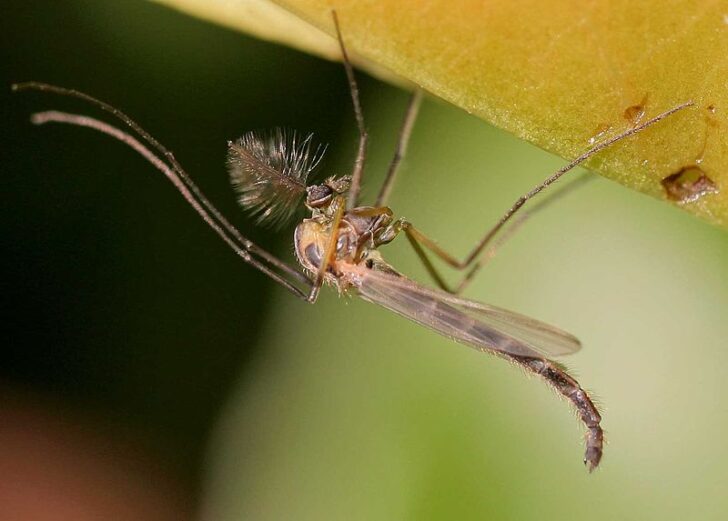New test for assessing the environmental compatibility of chemicals

New test uses insects to determine whether substances cause heritable changes in multicellular organisms.
Scientists at the Senckenberg Biodiversity and Climate Research Center and the LOEWE Center for Translational Biodiversity Genomics want to make the assessment of the environmental impact of chemicals more reliable. They have therefore developed a test that uses insects to determine whether substances cause heritable changes in multicellular organisms. The scientists are using a combination of experimental approaches to breed many generations of insects and bioinformatics methods to evaluate the fully sequenced genetic material of the organisms. In the long term, this will be used to develop an additional standard test, the researchers report in "Environmental Pollution."
Cadmium is used in the production of fertilizers and batteries and stands out negatively in environmental monitoring due to water pollution. Researchers at the Senckenberg Biodiversity and Climate Research Center and the LOEWE Center for Translational Biodiversity Genomics (TBG) have now tested whether the substance causes germline mutations in multicellular organisms at concentrations considered ecologically realistic. Such changes in the genetic material of cells have long-term consequences with a wide range, because they are inherited by subsequent generations. In contrast, toxic concentrations of substances primarily affect the individual organism exposed to the substance.
As a proxy for multicellular organisms, chironomid mosquitoes of the species Chironomus riparius were exposed to low but environmentally relevant concentrations of cadmium over several generations. "Surprisingly, our analysis shows that the chosen cadmium concentration does not cause germline mutations in chironomids. This is pretty much contrary to what was previously suspected. In the current regulations, this cadmium concentration is considered mutagenic," states Dr. Halina Binde Doria, head of the study at the LOEWE Center TBG.
Environmental compatibility tests are required before substances are approved and also test their potential to cause mutations. However, this mutagenicity test is only performed on bacteria or laboratory-generated cell cultures. "Much of biodiversity, however, consists of multicellular organisms, the complexity of which these tests do not do justice to. For example, the cells of multicellular organisms have different repair mechanisms. Therefore, pollutants have different targets. Our study shows that current mutagenicity tests are unreliable," said Prof. Markus Pfenninger, Senckenberg Biodiversity and Climate Research Center and LOEWE Center TBG.
A new test that Doria and Pfenninger have demonstrated on sugar gliders aims to solve this problem by focusing on the entire genome of multicellular organisms. "We are working with insects because they make up 90 percent of all animal species. Using a method we developed, many generations are then bred and exposed to the substances in a short period of time," Doria said. In addition, the researchers have further developed bioinformatic evaluation and put together a pipeline, that is, a sequence of sequential search protocols, that reliably detects germline mutations in the genomes of multicellular organisms.
Each year, some 50,000 to 100,000 chemical substances are registered in the European Union that pass only the previous mutagenicity test, if at all. "If we continue to proceed in the same way as before, we will be introducing substances into the environment whose ecological impact is not adequately recorded. In the long term, therefore, we want to establish our test as a new standard so that the hazard potential of new environmental chemicals can be assessed comprehensively, reliably and economically, and so that concentrations are approved that are neither toxic nor mutagenic in nature in all organisms, whether unicellular or multicellular," says Pfenninger. The test thus follows the aspiration of the LOEWE Center TBG to translate results from genomic research into biodiversity into applications that benefit society.
Original publication: Environmental Pollution – Measuring mutagenicity in ecotoxicology: A case study of Cd exposure in Chironomus riparius
Source: Chemie.de – Neuer Test zur Bewertung der Umweltverträglichkeit von Chemikalien
Image source: Wikimedia Commons ©entomart